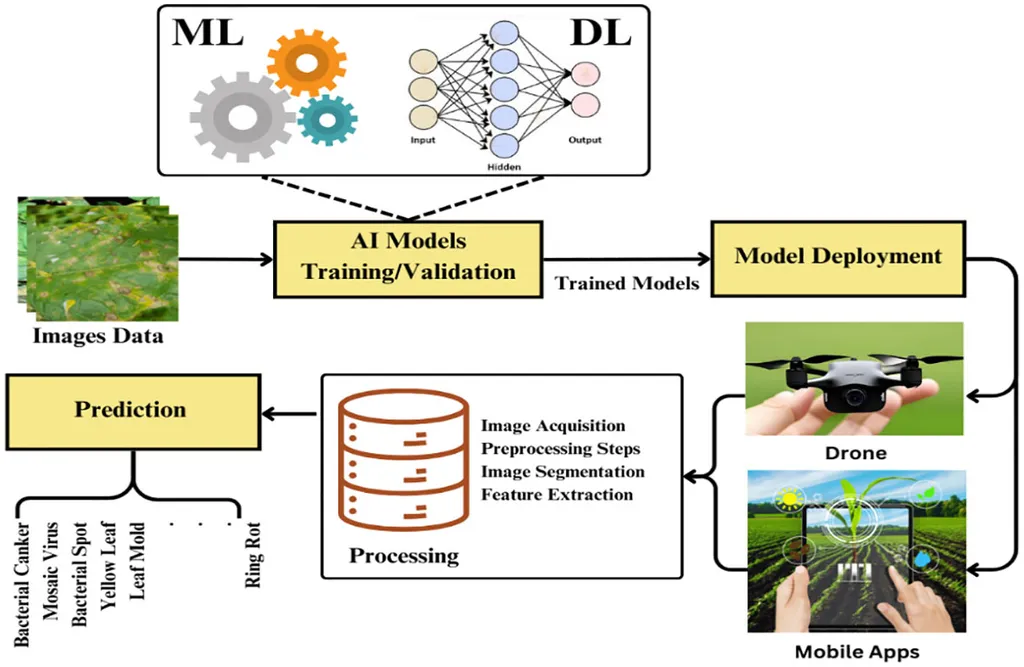In the heart of modern agriculture, where the stakes are high and the margins are tight, a new tool is emerging that could revolutionize how farmers protect their crops. Researchers have developed a deep learning model that can accurately detect and classify plant diseases and pests, offering a promising solution to a problem that costs the global economy billions each year. This innovation, published in *BMC Plant Biology*, is not just about identifying problems—it’s about doing so with unprecedented accuracy and speed, potentially transforming agricultural sustainability.
The study, led by Wasswa Shafik of the Dig Connectivity Research Laboratory (DCRLab), focuses on six high-value crops: apples, apricots, bird cherries, peaches, pears, and walnuts. Using the Turkey Plant Pests and Diseases (TPPD) dataset, which includes 4,447 images across 15 classes, the team implemented a ResNet-9 model. After rigorous hyperparameter tuning and data augmentation, the model achieved remarkable results: an accuracy of 97.4%, precision of 96.4%, recall of 97.09%, and an F1-score of 95.7%. These metrics represent a significant leap forward compared to existing research.
But what truly sets this research apart is its emphasis on model explainability. By leveraging SHapley Additive exPlanations (SHAP), the team created saliency maps that visually illustrate the model’s decision-making process. “The model doesn’t just give us a diagnosis—it shows us why it made that diagnosis,” Shafik explains. “This transparency is crucial for farmers and agronomists, who need to understand the reasoning behind the predictions to take appropriate action.”
The model’s ability to detect subtle visual cues—such as edge contours, texture variations, and high-activation regions—enables it to distinguish between visually similar disease patterns. This level of detail could be a game-changer for the agriculture sector, where early and accurate detection of plant diseases is critical for securing crop yields and sustainability. “Delayed diagnosis or misclassification of diseases can lead to significant economic losses,” Shafik notes. “Our model aims to mitigate that risk by providing timely and accurate insights.”
The implications of this research extend beyond individual farms. Early and timely disease detection is essential for achieving the United Nations’ sustainable development goals, including zero hunger, climate action, and good health. By reducing the need for broad-spectrum herbicides and enabling targeted treatments, this technology could also minimize environmental pollution, contributing to a more sustainable agricultural future.
As the agriculture sector continues to embrace precision farming tools, this research could pave the way for more sophisticated and reliable disease detection systems. The integration of deep learning and model explainability not only enhances the accuracy of diagnostics but also builds trust among users, who can now see the rationale behind the model’s predictions. This transparency is likely to accelerate the adoption of AI-driven solutions in agriculture, ultimately benefiting farmers, consumers, and the environment alike.
In a field where every decision counts, this research offers a glimpse into a future where technology and sustainability go hand in hand. As Shafik and his team continue to refine their model, the potential for widespread impact grows, promising a brighter, more resilient future for global agriculture.

